How to get started with the Snipping Tool app in Windows 11
Do you need to capture anything on your screen? Use the Snipping Tool in Windows 11. Here's how.
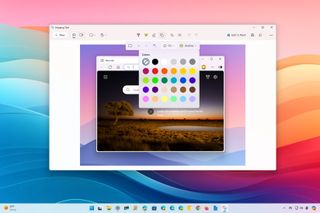
On Windows 11, you can use the Snipping Tool to take screenshots without resorting to a third-party tool. In this guide, I will teach you how to get started and get the most out of the app.
The new Snipping Tool app replaces the old version of the Snipping Tool and the Snip & Sketch (still available on Windows 10) with a new experience that combines the best of both apps.
The app lets you take screenshots in different ways. You can select a rectangle, use free mode, or quickly capture a window or the entire screen. The second part of the experience is the new editor that lets you crop, annotate, extra text, redact sensitive information, and save or share screenshots. You can even use the app to screen record videos with and without audio.
In this how-to guide, I will explain how to take screenshots and screen record videos using the Snipping Tool app on Windows 11.
How to use Snipping Tool to take screenshots
The Snipping Tool is a straightforward app that allows you to take screenshots on Windows 11 through the app or shortcut. The app also includes settings you can configure, including the ability to use the "Print screen" key instead of the "Windows key + Shift + S" shortcut.
Screen capture via app
To take screenshots through the Snipping Tool app, use these steps:
- Open Start.
- Search for Snipping Tool and click the top result to open the app.
- Select one of the available screen capture modes, including:
- Rectangle mode — creates a rectangle screenshot using the mouse.
- Window mode — saves a screenshot of a window.
- Full-screen mode — takes a screenshot of the entire screen.
- Free-form mode — allows you to use the mouse to select any form you want from the screen.
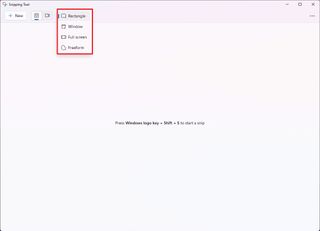
- (Optional) Use the Delay option to delay the capture for up to 10 seconds.
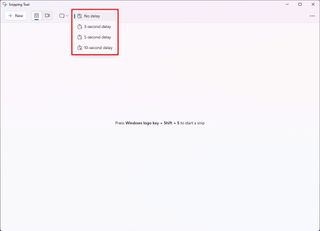
- Quick note: This option can come in handy when trying to capture a particular action.
- Click the New button.
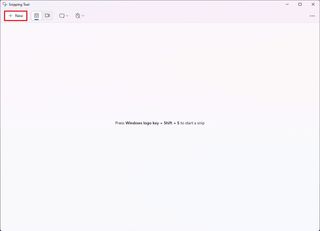
- Create the screenshot with the mode you selected.
Once you complete the steps, the screenshot will open in the Snipping Tool editor, where you can save the capture or annotate it before sharing it.
Get the Windows Central Newsletter
All the latest news, reviews, and guides for Windows and Xbox diehards.
Screen capture via shortcut
Alternatively, you can use a keyboard shortcut to quickly bring up the tools to take a screenshot on Windows 11. Here's how:
- Use the "Windows key + Shift + S" keyboard shortcut.
- Select one of the screen capture modes:
- Rectangle mode.
- Window mode.
- Full-screen mode.
- Free-form mode.
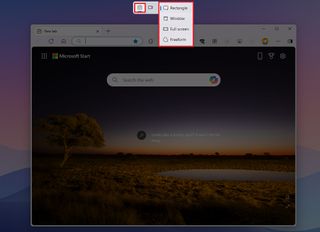
- Create the screenshot with the option you selected.
After you complete the steps, the capture will open with the Snipping Tool editor.
Basic screenshot editing
To edit and save the screenshot, use these steps:
- Click the Image Crop tool in the command bar.
- Use the edges to crop and resize the screenshot.
- Click the Check button to apply the changes.
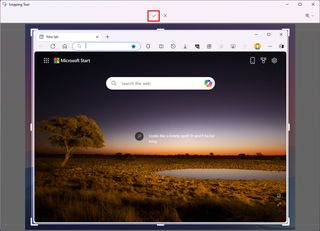
- Use the "Ballpoint pen, Highlighter," or "Touch Writing" features to annotate the image.
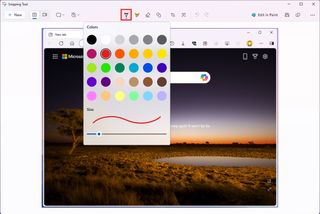
- Quick tip: The Ballpoint pen and Highlighter have different options to change the color and stroke size to annotate the image.
- Use the Eraser tool to delete strokes.
- (Optional) Click the Copy button from the top right to copy the image to the clipboard and paste it onto a document.
- Click the Save button from the top right to save the screenshot as an image file (.jpg, .png, or .gif).
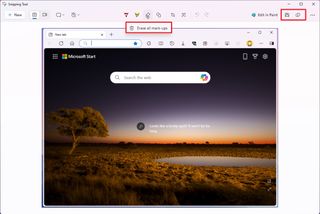
- Click the Share button from the top right to share the capture with other people using different apps.
Once you complete the steps, the screenshot will save on the computer.
Adding shapes to screenshot
To add shapes to the screenshot, use these steps:
- Click the Shapes button from the command bar.
- Choose the share (square, circle, straight line, or arrow).

- Open the Fill menu and choose the color (if applicable).
- Open the Outline menu and choose the outline color and size.
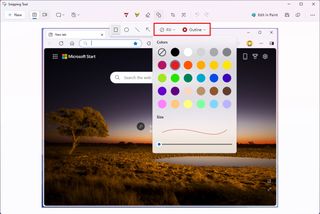
- Create the shape on the image.
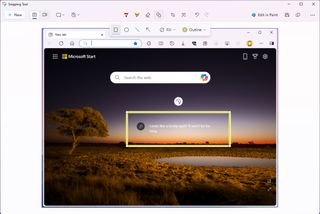
Once you complete the steps, the shape will be added to the screenshot.
Redact or extract text on screenshot
To redact text to hide sensitive information on a screenshot, use these steps:
- Click the Text actions button from the command bar.
- (Option 1) Select the desired text, right-click the selection, and choose the Copy text option.
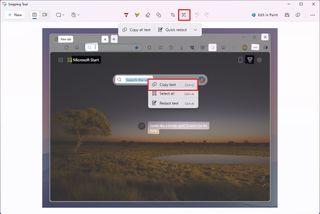
- Quick tip: You can also use the "Copy all text" option from the "Text actions" menu.
- (Option 2) Select the desired text, right-click the selection, and choose the Redact text option.
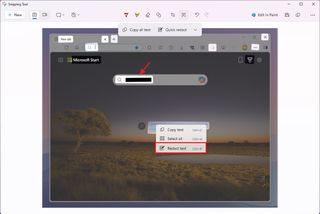
- Quick tip: You can also use the "Quick redact" option from the "Text actions" menu to redact emails and numbers automatically. Also, from the drop-down menu, you can choose the details the app can redact automatically.
Once you complete the steps, the sensitive information will be redacted on the screenshot.
How to use Snipping Tool to screen recording
To record the screen with the Snipping Tool app, use these steps:
- Open Start.
- Search for Snapping Tool and click the top result to open the app.
- Click the Record button.
- Click the New button.
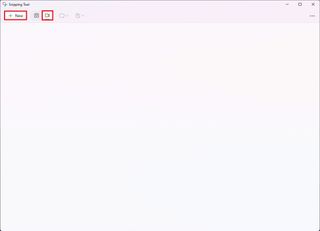
- Choose an area of the screen to record.
- Click the Microphone menu and select the voice capture device. (You can also choose the "Mute" button to disable audio capture.)
- (Optional) Click the "Mute system audio" button to prevent the app from recording audio from your computer.
- Click the Start button.
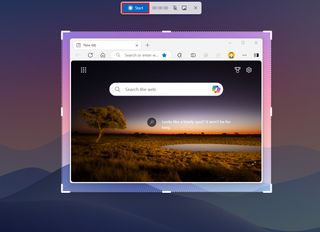
- Continue with the interaction you want to capture.
- Click the Stop button.
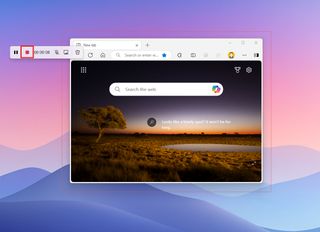
- Quick note: You can click the "Delete" (trash) button to discard the recording and start over.
- (Optional) Click the Play button to playback the screen recording.
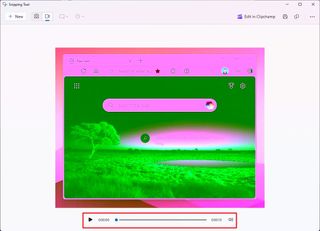
- Click the Save button.
- Choose the location to store the video recording.
- Click the Save button one more time.
Once you complete the steps, Snipping Tool will create a video file with the screen recording.
How to change settings on Snipping Tool
The Snipping Tool lets you configure various settings.
To change the app settings, use these steps:
- Open Start.
- Search for Snipping Tool and click the top result to open the app.
- Click the See more (three-dotted) menu and select the Settings option.

- In the Settings page, enable or disable the options as needed:
- Automatically copy changes — Copies the capture in the clipboard for easy pasting onto documents.
- Automatically save screenshots — Saves capture into the Screenshots folder automatically.
- Ask to save edited screenshots — Ask to save the capture as you close the editor.
- Multiple windows — Launches a new instance of the app for each capture.
- Add border to each screenshot — Inserts borders to each snip automatically.
- HDR screenshot color corrector — Adjusts colors for screenshots taken on HDR monitors.

- Select the App theme setting under the "Appearance" section.
- Select the color theme. Options available:
- Light.
- Dark.
- Use system setting.

- (Optional) Choose the screen recording settings, including:
- Include microphone input by default when a screen recording starts.
- Include system audio by default when a screen recording starts.

- Click the "Use the Print screen key to open Snipping Tool" button under the "Shortcuts" section.
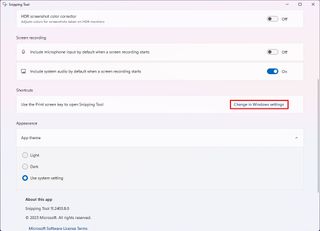
- Click the Yes button.
- Turn on the "Use the Print screen button to open screen snipping" toggle switch to use the Print screen key instead of the "Windows key + Shift + S" keyboard shortcut to open the tool.
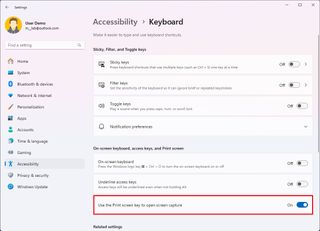
After you complete the steps, the settings will apply automatically.
More resources
For more helpful articles, coverage, and answers to common questions about Windows 10 and Windows 11, visit the following resources:
Mauro Huculak is technical writer for WindowsCentral.com. His primary focus is to write comprehensive how-tos to help users get the most out of Windows 10 and its many related technologies. He has an IT background with professional certifications from Microsoft, Cisco, and CompTIA, and he's a recognized member of the Microsoft MVP community.
